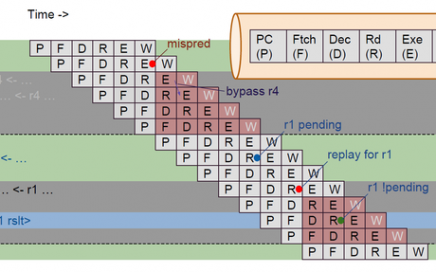
Paper 7: Top-Down Transaction-Level Design with TL-Verilog
Transaction-Level Verilog (TL-Verilog) is an emerging extension to SystemVerilog that supports transaction-level design methodology. In transaction-level design, a transaction is an entity that moves through a microarchitecture. It is operated upon and steered through the machinery by flow components such as pipelines, arbiters, and queues. A transaction might be a machine instruction, a flit of a packet, or a memory read/write. The flow of a transaction can be established independently from the logic that operates on the transaction. We present a preliminary library of TL-Verilog flow components that can be quickly stitched together to establish a complete microarchitecture. We show how transaction logic, like packet decoding, can be added within this flow.

